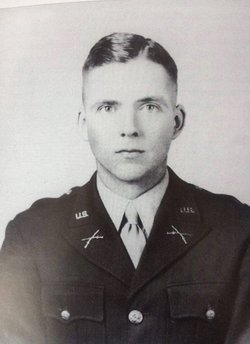Monuments
War Museum (Museo) Gothic Line - Castel del Rio
LTC Charles Furr Monument (351st Infantry Regiment, 88th Infantry Division)

From the 88th Division Website: The European landscape is decorated with memorials to America's war dead: Headstones, crosses and granite monuments inscribed with names, dates and brief descriptions of the heroism and sacrifice of American soldiers during World War II. In the mountains of Italy, one newly erected marker recalls the sacrifice of a Rock Hill native 56 years after his death. The town of Castel Del Rio erected a monument to Lt. Col. Charles P. Furr and the men of the 351st Regiment, "whose bravery was seen on this site" on Sept. 25, 1944.
A Rock Hill High School graduate, Charles Furr was a member of the National Guard when his unit was activated around 1940. He later attended Officers Candidate School in Fort Benning, Ga. In Europe, Furr commanded the 351st Regiment, which was part of the famed 88th Infantry Division of the U.S 5th Army.
On Sept. 25, 1944, 26-year-old Furr was killed during a skirmish with German troops near Mounte Pratolungo in Castel Del Rio, a small town in the mountains between Florence and Bologna.
At the time of his death, Furr was leading an advance patrol. After the shooting stopped, two Italian teens hid the bodies from the Germans and later turned them over to American troops.
Furr was buried in Florence, Italy, along with thousands of other fallen American soldiers. His remains were disinterred in 1949 and returned to Rock Hill for burial in the military section of Laurelwood Cemetery. But even after the war, Castel Del Rio residents never forgot Furr and his men, who liberated them from the Germans. Today, hikers call that mountain pass "il passo del Colonnello" or Colonel's Pass in memory of Furr, said Lorenzo Raspanti, a member of the Castel Del Rio Museum.
A 59-year-old Fort Mill High School English teacher, Hannon was not yet 3 when her mother Lucille Dabney Furr received news of her husband's death.
"I remember clearly the night my mother received word he was dead," said Hannon. She recalled that although she was too young to remember what it felt like losing her father, she can't forget that before he died Furr sent instructions from the battlefront via military V-mail asking his father, Herbert, to buy Sandra a puppy for her third birthday, which fell on Oct. 28.
"He instructed him to place the dog in a crate so it would look like it came from the battlefield," Hannon said. "My grandfather bought that dog - a cocker spaniel named Tinker."
In addition to those memories, Hannon also has the old letters she scribbled and sent to her father, whose youthful optimism is captured in a 1943 family portrait with his daughter and wife. Hannon has a sketch of her father and an 1875 half dollar coin found near where her father was killed.
"I felt it was a talisman," Hannon said." A gift from my father's grandfather."
"I was captured at the same time the colonel was killed," said 77- year-old Trimmer from his home in LaSalle, Ill. "We were going up the mountain and walked into a trap. The Italians found eight bodies. About seven of us were captured," Trimmer said.
A retired Illinois state employee, Trimmer returned to Italy last year to revisit the place where he was captured before he was transported to Munich, Germany. He spent eight months as a POW at Stalag 7A at Moosburg, Germany, before being freed April 30, 1945.
"I wanted to go back and see where I was captured," said Trimmer who learned of the plans to erect the marker during his 1999 visit.
"When they gave him the talisman, they started looking for me," Hannon said.
Through the Internet and the network of the Blue Devils Association, the group of former members of the 88th Infantry, Trimmer found Hannon. She received the invitation to travel to Italy. Initially, because of health concerns, Hannon was reluctant to go.
"It was something she needed to do," said the Rev. Walter A. Clark, who married Hannon's mother a year and a half after Charles Furr was killed. A World War II veteran, Clark understood Hannon's emotional ties to the war and her father.
"It was part of her life," Clark said. "She needed to understand her heritage."
For Hannon, it was like completing an unfinished journey she had begun as a little girl more than 50 years ago.
"As a child, I always wanted to know what it was like when he died. I actually got to walk and be in the place where he was during his closing days. To meet the people he talked to," Hannon said. "It made me feel as if I knew him. I had not had that opportunity before."
